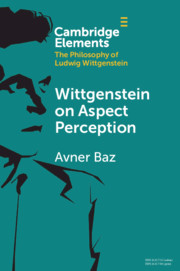Element contents
Wittgenstein on Aspect Perception
Published online by Cambridge University Press: 02 November 2020
Summary
- Type
- Element
- Information
- Online ISBN: 9781108878012Publisher: Cambridge University PressPrint publication: 26 November 2020
References
- 17
- Cited by

